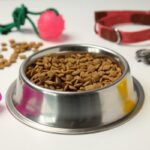Neutering your rabbit is a good idea – there are many benefits
Rabbits can be social animals, so it is best to keep them in pairs or small groups. A male and a woman are the best combinations. This is why it is so important to neuter them. Rabbits are renowned for their breeding ability. They can Neutering your rabbit be kept in the same sex pair, but they will not fight unless they have been together for less than 10 weeks. They will get along better if they have been neutered. They should never be separated.
For females, neutering can also be beneficial for their health. In older women, cancers and infections of their wombs are common. It is better to neuter young than it is to reduce the chance of breast diseases such as cancer. When they reach sexual maturity, rabbits are more likely to be territorial and defend their territory against other animals and people. Following neutering, both genders become less aggressive. The need to spray with urine (scent marking) is less frequent and the dogs are easier to house-train.
The testicles of male rabbits have already fallen at the age of three to four month. Females can usually be neutered after sexual maturity at six months depending on the size of the breed. Because male fertility retains some of its fertility, it is important that sexually mature couples are separated for at least three weeks after neutering.
Is there any risk associated with the anaesthetic Neutering your rabbit
Anaesthesia is not a safe procedure for any animal, or person. Anaesthetic drugs and techniques are safer than ever, so the risk is low. Rabbits are very common pets and veterinarians are trained to anesthetise them. You might be able to relax if your vet tells you how many rabbit neuterings he does annually.
You can bring your pet to the vet for a health check before you make an appointment to neuter your pet. This will ensure that your animal is in good condition. This is especially recommended for older rabbits (more than three years). It is easy for rabbits to stop eating due to pain. You might want to ask about painkillers. Tell your vet if your pet has ever been diagnosed with respiratory disease.
What happens on the day?
A routine procedure such as neutering or spaying your pet will usually only require one day of visits to the vet. Your pet will usually be taken to the clinic in morning and picked up at the end of the day or early evening. Check with your vet. You should not give your rabbits anesthesia if they aren’t feeling well.
Your pet should be kept in a secured box or basket with your address and your name. Most likely, you will need to sign a consent document and leave a number for your pet’s contact phone number. Some rabbits take longer than others to get around, so they may need to be admitted to the vet overnight.
Collecting your pet after surgery
You should ensure that the carrying case and overnight cage don’t have any material (such as straw bedding or sawdust) that could stick on the Neutering your rabbit wound. Ask your pet if they require medication. Find out when the pet will be returning for follow-up check-ups. Make sure to have an emergency number. A small amount of fur will be removed from the area of the surgery, along with the leg and the ear for drug administration.
Once you have returned home, put your pet in their cage. Most vets will use stitches or surgical glue to fix the skin. Rabbits don’t need Elizabethan collars. Collared animals can prevent caecotrophy (see the leaflet Basic healthcare in rabbits (S11). Your vet should be contacted if your pet chews on the wound.
Abscesses
Any rabbit suffering from abnormal swelling should be seen by a vet. Abscesses in rabbits can occur from wounds or injuries, as well as from dental problems. Some abscesses may also develop without warning. The abscesses are often surrounded by a thick covering and the material inside is thick and dry. It is not possible to treat rabbit abscesses by opening the wound and draining it.
Dental disease
Three types of teeth can be found in rabbits. The incisors are long, visible teeth that can be seen at the front. Molars or premolars are hidden in the cheeks. The rabbit’s teeth are different than human teeth in that they continue to grow throughout its life.
This is important in the wild as rabbits spend six to seven hours each day eating fibrous foods. This continually wears down the teeth.
Both types can lead to problems. As the long curving Neutering your rabbit front teeth can be clearly seen, it is easy to see the overgrowth of the incisors. The back teeth can’t be seen if they are overgrown. You may notice signs of dental problems such as weight loss, eating less, preference for soft food, dribbling or stopping eating. In some cases, affected rabbits may not be able to groom themselves properly. Hair can become matted or feces might accumulate at the back. A vet will examine your rabbit’s mouth. Sedation or anaesthesia may be required for inspection.
What is the treatment?
Regular trimming is necessary for overgrown incisors. This is usually done using a dental drill. Extraction of the teeth is a permanent option. Rabbits will usually be able to eat without their incisors.
The back teeth that are affected will require regular trimming and burring. This is usually done under anaesthetic. This could be repeated every four to eight weeks. The diet should be changed to reduce the chance of recurrence. Calcium supplements may be required, but this should only be done if recommended by your veterinarian. The removal of cheek teeth can be difficult and abscesses can be very difficult. Many rabbits with facial abscesses are so severe and cause so much pain that euthanasia may be the only choice.
Important points
- Rabbits need to be kept in groups or pairs.
- For both sexes, neutering is good for happiness and health.
- Give your pet lots of hay and other high fiber foods
- Don’t delay in contacting the vet if you suspect your rabbit may be unwell.
Read Also:
https://www.happylifeanimal.com/dd-5e-travel-speed/
https://www.happylifeanimal.com/travel-humidifier/
https://www.happylifeanimal.com/large-chicken-coop-plans/
https://www.happylifeanimal.com/why-bully-sticks-are-great-treat-for-every-dog/
https://www.happylifeanimal.com/some-canines-are-afraid-of-stairways/
https://www.happylifeanimal.com/dog-friendly-breweries/
https://www.happylifeanimal.com/what-is-kennel-cough/
https://www.happylifeanimal.com/cultured-meat/
https://www.happylifeanimal.com/captive-dolphin-industry/
https://www.happylifeanimal.com/factory-farming-is-over-medicated-with-antibiotics/
https://www.happylifeanimal.com/virtual-farming/


